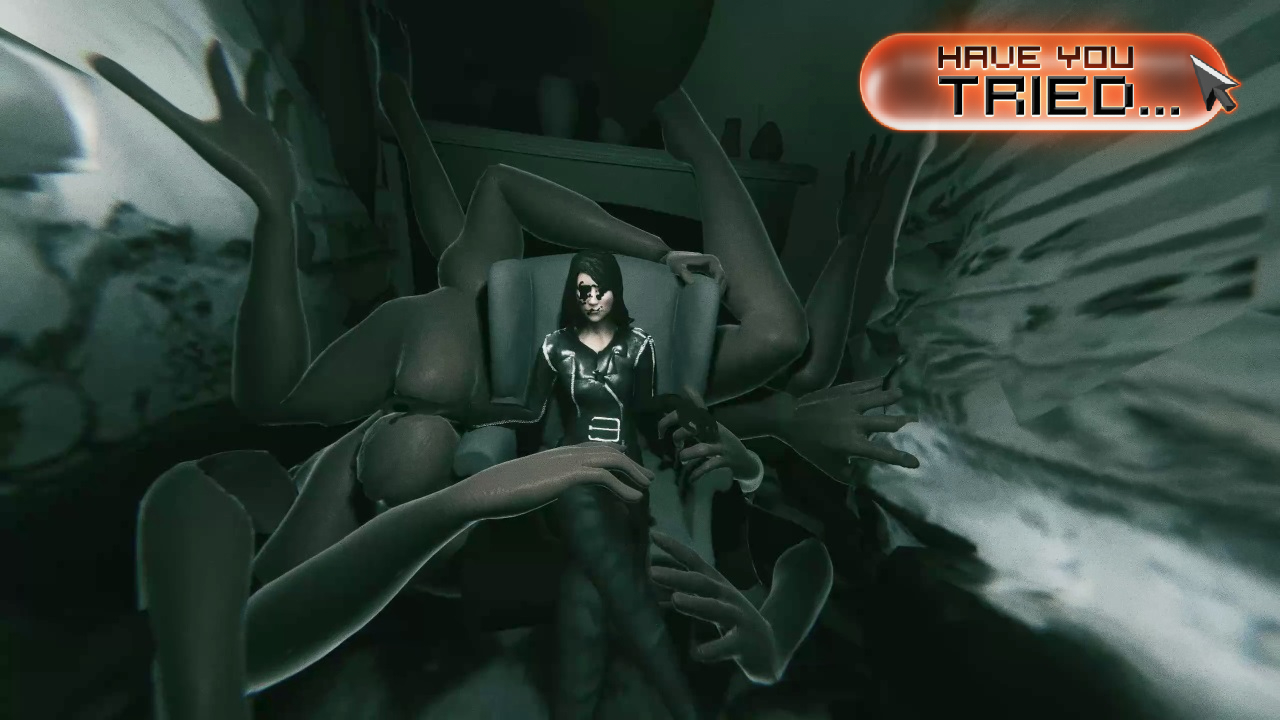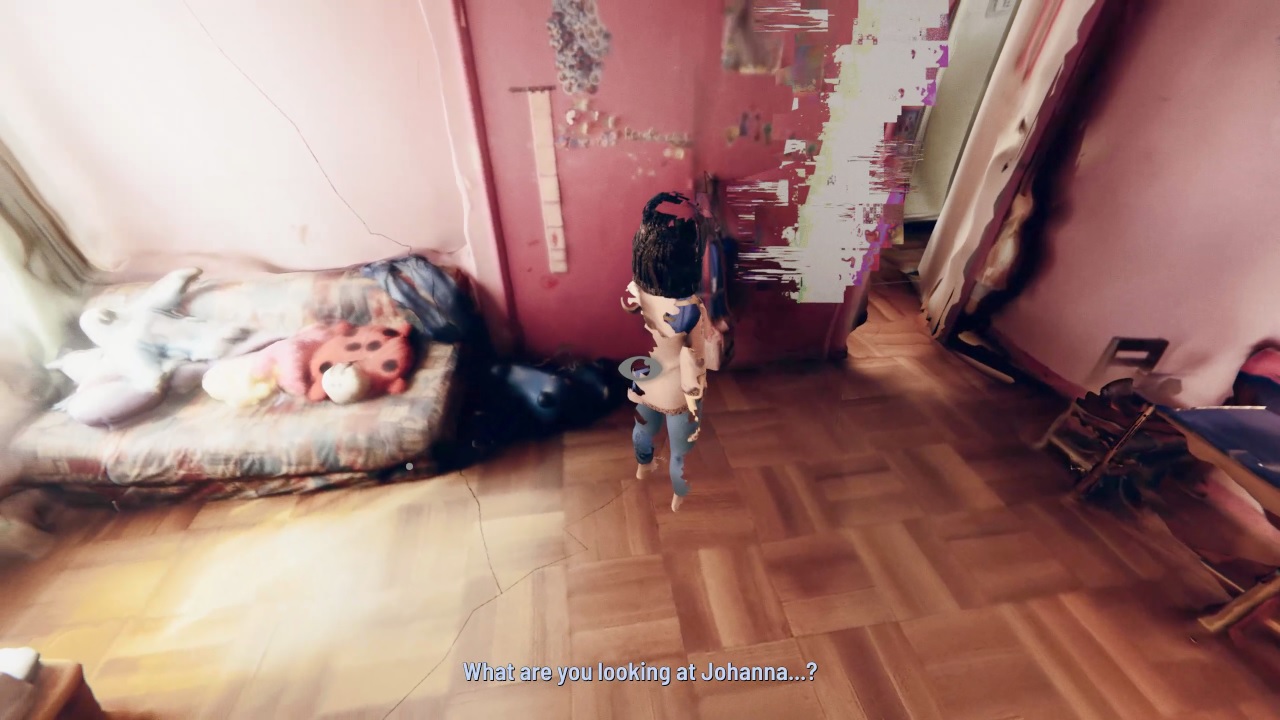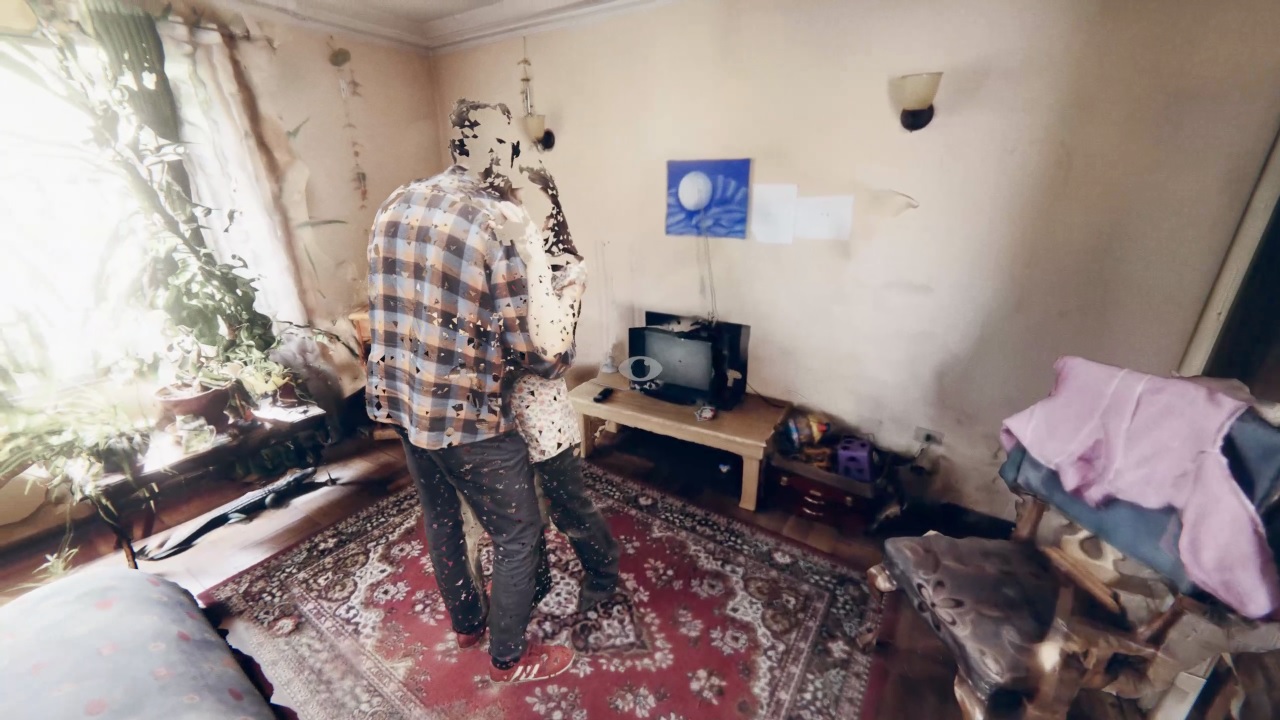Have you tried… playing The Matrix meets The Haunting of Bly Manor in The Signifier: Director's Cut?
Solve a woman's death through scans of her memories, consider the ethics, and ask yourself what it all means

There's a very sci-fi haunting at the heart of The Signifier: Director's Cut. Instead of pursuing spirits in dark houses to find out what happened to them; you're playing back AI-constructed brain scans and exploring the memories they contain for much the same reason. The two might not sound that much alike but both involve watching echoes of people long gone and trying to fill in the gaps. Who was this digital spirit? Why did they die?
Spiritual artifacts
It's the way that these memories are articulated that really make The Signifier feel special though. The AI reconstructions of the dead woman's memories are glitchy and warped in recognizable ways and feel like bad 3D scans full of low res textures and geometry, that undulate based on the detail of the recollection. The more vivid or important the moment, the higher the fidelity, while some unimportant room corner might be little more than a picture of a room corner if it wasn't a big focus of an event. The idea might be pure sci-fi, but the way it's represented feels immediately believable and real. Anyone who's ever seen a video smeared by compression artifacts, or a game that hasn't loaded quite right, will understand what's going on.

There are two ways you can inhabit these memories as you explore, that further add to the beauty of the idea. There's an objective and subjective state that you can switch between at will. The former is factual - the representation of a chair, for example - while the latter is more emotional and might represent the way the chair makes you feel, instead. So while the objective state gives you concrete clues to follow, the subjective state is full of metaphors and symbolism. I don't want to give too much away but a mask representing shame is a repeating example. Elsewhere, you're followed around by a picture of a dog, literally, as a photo of the animal on a small table glides around to be at your side at all times. Finding out what that represents is a big part of the mystery. There are real-world locations and clues to track down as well to help clarify things, as you uncover and explore real-life locations in the memories. There's a really satisfying detective feel to the whole experience as a result.
What makes all this work so well is that it gives you just enough to go on in terms of investigating and unlocking leads, while leaving your mind spinning trying to work out what some of the more symbolic representations might mean. The atmosphere it all creates is incredibly evocative at times and the way that The Signifier articulates all this can be beautiful. There's an aching, wistful melancholy to exploring the woman's childhood apartment and seeing how her memories recall and recreate her youth. The ambient music and wisps of recollection craft a heartbreaking ghostly representation of the past. Elsewhere, there's hard edges and palpable darkness to the woman's older life habits of visiting a high glass seedy club for rich perverts.
An uninvited guest
These memories, while diverse and occasionally confusing, help to create a believable person as you piece things together. As a result, however, there's something uncomfortable and invasive at times about the process. You feel like you're crossing personal boundaries - seeing a person's last moments through their own jumbled experiences of it, or rifling through a childhood they've tried to forget without thinking why they might not want to go back. It's a concept that lands both with the player as they pry through a mind without consent, and with the narrative that takes place in a world where AI, technology, and humanity have made exactly that situation a fear. What could be more personal data than an explorable scan of literally everything you ever were.

This story sees you as a researcher at the cutting edge of this brain scanning tech just as AI advances, data protection laws, and social media influence puts that technology under increasing scrutiny and regulation. The dead woman, Johanna, was the VP of a global AI firm and you've been hired to use your research to investigate her brain scan and confirm a cause of death. Where things get messy is that you've been hired by the group that's meant to be policing what you're doing - the Technology Safeguard Bureau or TSB. But, because Johanna was a big wheel in a global AI company that was resisting the TSB, the TSB is bending all its rules to breaking point to get information on the company by investigating the events. You're not spying on the company you're just confirming the cause of death, you're told. Which is totally legal. But if you happen to find anything the TSB can use while you're in there, well wouldn't that be a happy coincidence?
It's a messy, 'someone's going to jail for this eventually' kind of setup that unravels in the opening seconds. As you interact with various people in the game you quickly realize you're being pulled in two directions between the invasive and potentially abusive TSB, and the AI company that might just be about to unleash a near-apocalyptic tech revolution. You're as much investigating them, through real-world conversation, dialogue, and in-game details, as you are the digital memories, because you will have to pick a side. Neither ever really feel entirely right, it's more shades of 'less wrong'.
Sign up to the GamesRadar+ Newsletter
Weekly digests, tales from the communities you love, and more
Invasive thoughts
The concerns about personal privacy when your brain can be explored so easily - plays out cleverly here. Again, I won't spoil anything but as the game progresses you feel increasingly more invasive within the dead woman's mind. You are technically following the leads as you unlock clues and see where they go, but minds being such messy things means you end up exploring childhood memories, buried secrets, and some very personal private things.
The Signifier Director's Cut expands on the game in significant ways too. When I played the original I enjoyed it immensely but felt some of the details were a little too vague and the ending lacked a clear punch. In this new version, however, there are some significant changes that clarify and add to what's there, making a good game better. The conclusion in particular has a much firmer landing and left me with a profound sense of pity for Johanna's life. I'm not one for replaying games immediately, but I got so much more out of the Director's Cut, having only just finished the original game, that I barely noticed the repetition of playing it twice almost back to back. It's a great, tech-infused murder mystery ghost story that delivers an atmospheric and interesting narrative through a mix of clever ideas and brilliant visual design that's worth investigating.
The Signifier Director's Cut is out now on PC, with planned releases at a later date for consoles.

I'm GamesRadar's Managing Editor for guides, which means I run GamesRadar's guides and tips content. I also write reviews, previews and features, largely about horror, action adventure, FPS and open world games. I previously worked on Kotaku, and the Official PlayStation Magazine and website.


